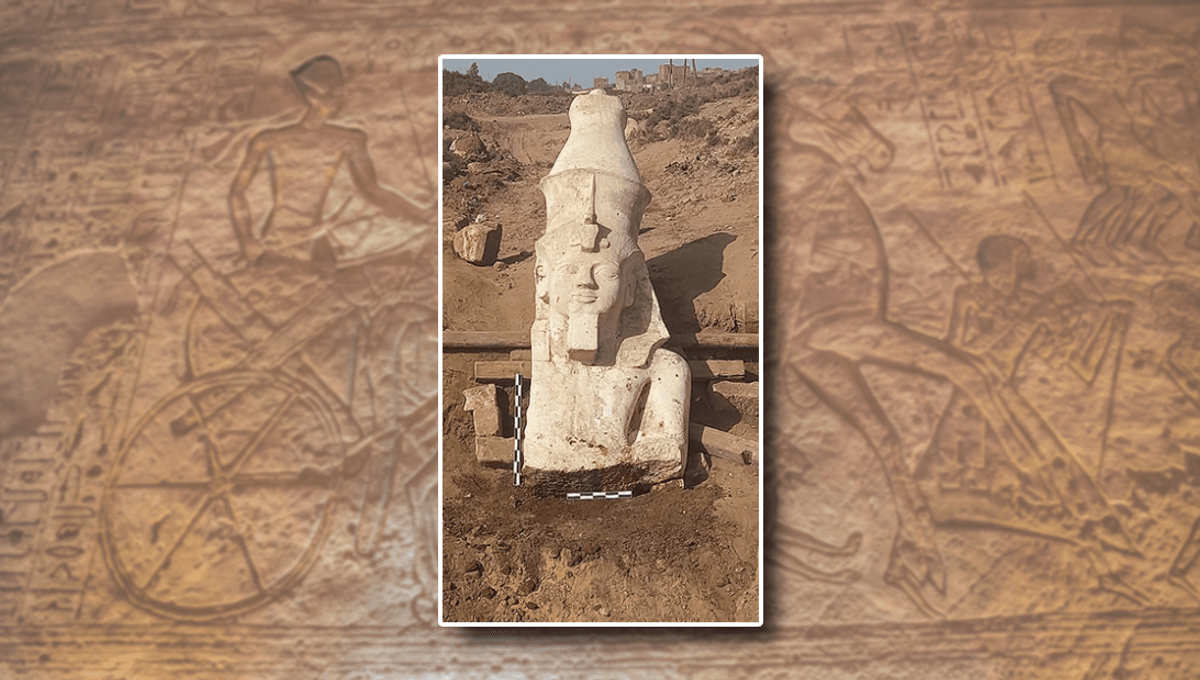
An international team of archaeologists have unearthed the long-lost upper half of a statue of the Egyptian pharaoh Ramesses II. The discovery comes nearly 100 years since the statue’s lower half was first identified.
In 1930, Günther Roeder, a German archaeologist, unearthed the lower part of a statue that depicted Ramesses II, otherwise known as Ramesses the Great. Ramesses ruled the Nile Valley and the wider Egyptian Empire from 1279 to 1213 BCE, which made him one of the longest ruling pharaohs in history.
The newly discovered statue portion was found by a joint team of Egyptian and American archaeologists from the Egyptian Ministry of Tourism and the University of Colorado Boulder. It was recovered while the team were researching the ruins of the ancient city of Hermopolis (present day el-Ashmunin), which is about 150 miles south of Cairo.
The top of the statue is about 3.8 meters long (12.5 feet) and depicts Ramesses in a seated position, wearing a double crown and headdress that shows the royal cobra. When erect (stop it), the complete statue would have stood about 7 meters (23 feet) tall, so the researchers believe.
The statue itself is made of limestone and it has hieroglyphic writings on its back that exalt the Pharaoh.
The excavation at Hermopolis was initially launched to find the religious center that once stood there during the New Kingdom era (otherwise known as the Egyptian Empire), which extended from the 16th century BCE to the 11th century BCE, and lasted until the Roman era (30 BCE to 641 CE).
Along with the recovered statue piece, the researchers also found traces of ancient blue and yellow pigments that they can analyze to gain more insights into the statue and when it was created.
“It will be quite exciting to have a scientific analysis of the pigment,” Yvona Trnka-Amrhein, assistant professor of classics at the University of Colorado Boulder, expressed in a statement.
It is possible that the soil samples that were mixed in with the pigment can offer even more information about the history of the area.
Ramesses II is one of the few Egyptian pharaohs known to non-experts in the Western world. He was a source of inspiration for Percy Bysshe Shelley’s Ozymandias sonnet, was played by Yul Brynner in the film The Ten Commandments, and was voiced by Ralph Fiennes in the animation The Prince of Egypt.
Now that the top half of the statue has been recovered, Trnka-Amrhein’s colleague Basem Gehad, with the Egyptian Ministry of Tourism and Antiquities, has submitted a proposal to reunite them. However, it is currently unclear where the completed statue will be placed if the proposal is approved. It will likely remain at the site or be placed in a museum.
Source Link: Top Of Ramesses II Statue Was Missing For 94 Years – Archaeologists Just Found It